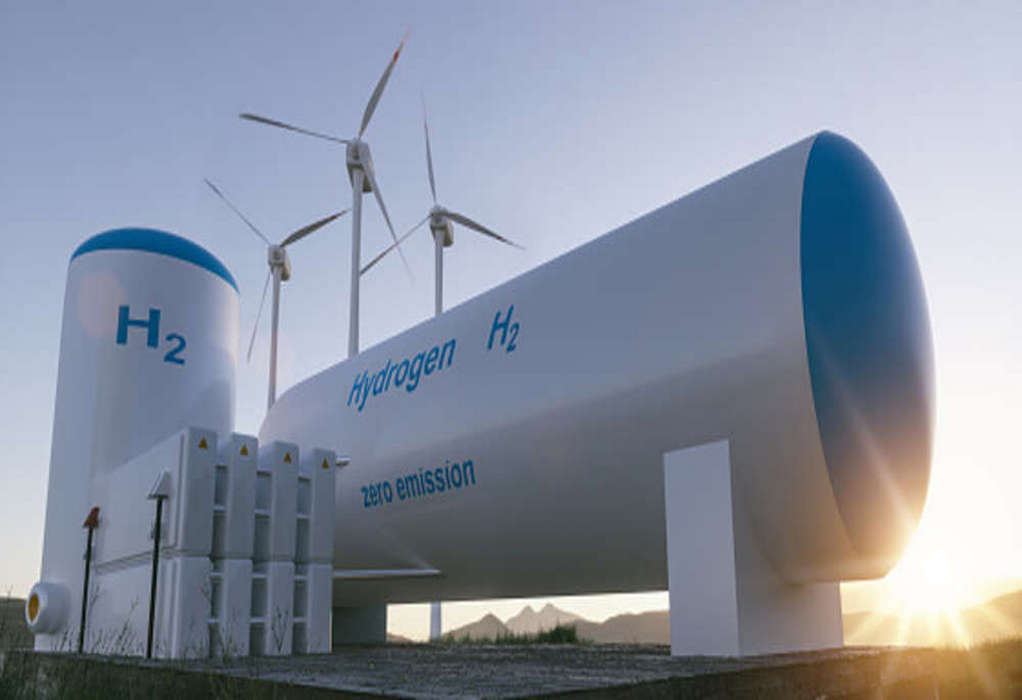The technology group Wärtsilä will collaborate with the Portuguese energy solutions provider and independent power producer Capwatt in the testing of a green hydrogen and natural gas blend fuel for Capwatt power plant located in Maia. The project will start in Q1, 2023 and it aims at testing blends of up to 10 vol.% green hydrogen. The combined heat and power plant which provides energy for Sonae Campus and the national grid currently operates with a Wärtsilä 34SG engine running on natural gas. This will be one of the first cases where green hydrogen is used to lessen the carbon footprint of an existing gas fueled Wärtsilä power plant.
The Wärtsilä engine at the site is already capable of operating on gas with up to 3% hydrogen. In order to reach the targeted level of 10% blending to meet the specific needs for Capwatt, modifications will be made to the engine, as well as its control system and the plant automation system. Capwatt intends to produce green hydrogen using an electrolyzer, powered by renewable energy.
“We are committed to decarbonising our operations and we see the blending of hydrogen and natural gas for fueling this plant as a significant step towards achieving this goal. Wärtsilä is a company with great experience and know-how in this field, and we look forward to working closely with them in this ground-breaking project,” commented Sérgio Rocha, CEO at Capwatt.
“This project concretely shows how existing power plants can take steps towards carbon-neutral power generation,” said Sushil Purohit, President, Wärtsilä Energy and EVP Wärtsilä Corporation. “As a technology, the combustion engine represents a viable solution for enabling the transformation to utilising future fuels. The flexibility of the Wärtsilä engines already plays an important role in allowing a far greater share of renewable energy to be incorporated into power systems.”
The project is in line with the country’s National Hydrogen Strategy, which aims to increase the share of hydrogen in energy consumption by 5% by 2030 in the industry sector. During the coming decade, the aim is to have 2.0 to 2.5 GW of installed hydrogen producing capacity, and to have 10 to 15% hydrogen injected into the natural gas grid.
Capwatt has a portfolio of nearly 160 MW of cogeneration plants that can benefit from this project’s know-how, which will play a significant role on decarbonisation of thermal energy demand, enabling the energy transition of its industrial clients.
Wärtsilä engines can be operated on hydrogen/natural gas blends with up to 25% hydrogen, and the company is working towards an engine and power plant concept for pure hydrogen operations by 2025.
Wärtsilä already has engine generating sets operating successfully on a natural gas and hydrogen blend in a newbuild power plant at an offshore floating testbed in Singapore.
Source: Wärtsilä
Tags: Capwatt, Gas Blend Fuel, Green Hydrogen, Natural Gas, Wartsila



Recent Posts
Goltens Partners with Orcan Energy to Expand Marine Waste Heat Recovery Solutions
NWSA Launches First Incentive Program for Zero Emission Trucks in Washington
IHI and Vopak Partner on Ammonia Terminal Development in Japan
Chimbusco Pan Nation Completes First B30 Marine Gasoil Delivery in Hong Kong
ITOCHU Announces Newbuilding Order for Ammonia Bunkering Vessel
India Launches Incentive Scheme for Electric Trucks under PM E-DRIVE Initiative
Royal Caribbean Welcomes LNG-Fueled Star of the Seas to Its Fleet
Swire Shipping Launches ‘Voyage to Zero’ to Help Customers Cut Scope 3 Emissions Swire